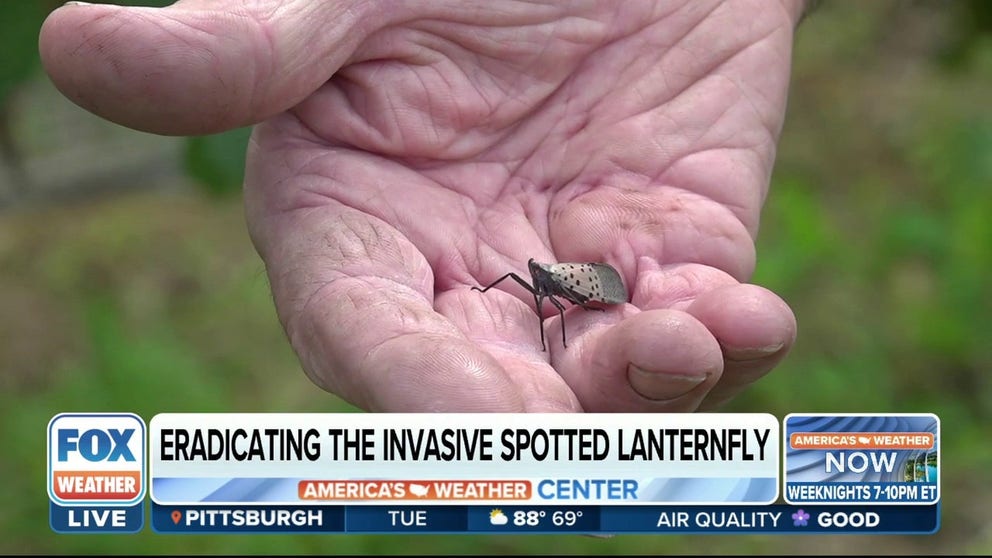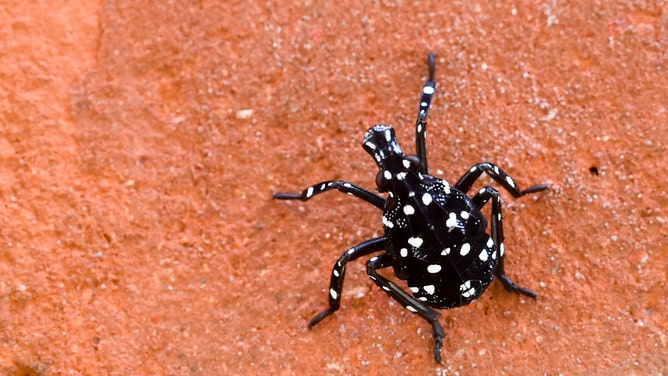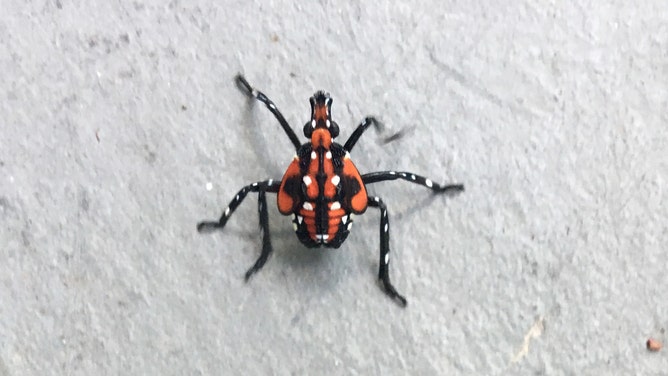Cars, trucks, trains among things to blame for spread of crop-destroying lanternfly, study finds
The spotted lanternfly is native to China, India and Vietnam. It was first reported in the U.S. in 2014 in Pennsylvania and has since spread across 14 states.
Invasive spotted lanternfly taking over the Northeast
States from New York to North Carolina are issuing quarantines for the spotted lanternfly, an invasive, plant-killing pest.
A recent study found that the spread of spotted lanternflies is largely driven by cars, trucks and other modes of human transportation.
How the insects spread has been a critical point of interest, since they can cause millions of dollars of damages to local economies.
Why spotted lanternflies are destructive

Pinned spotted lanternfly adult with wings open.
(Pennsylvania Department of Agriculture / FOX Weather)
Spotted lanternflies are small, winged insects that are native to China, India and Vietnam. They made their way to the U.S. in 2014, when they were first reported in the state of Pennsylvania.
In the years since, spotted lanternflies have spread across more than 100 counties in 14 states.
The spread of lanternflies is significant in that the insects destroy plants and crop yields of the locations they inhabit.
THESE ARE THE PESTS THAT BUG YOU EACH SEASON
According to the Pennsylvania Department of Agriculture, spotted lanternflies feed on sap from grapevines and a number of trees. The damage caused by this feeding stresses the plants, damaging their health and sometimes causing the plants to die.
In Pennsylvania alone, the department noted that the state’s agricultural and economic loss caused by spotted lanternflies is estimated to be $324 million, and costs 2,800 jobs every year.
How spotted lanternflies disperse across the U.S.
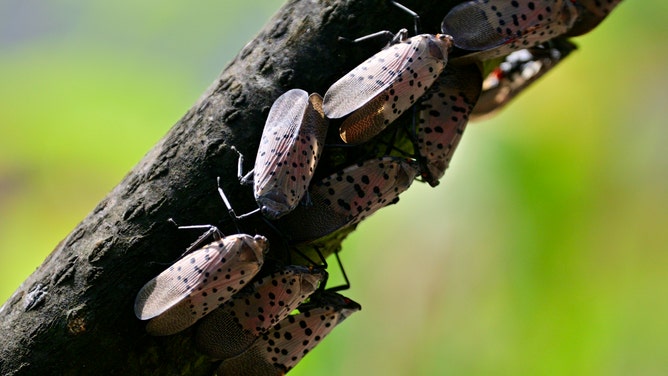
Spotted Lanternfly colonizes trees along a pathway on the banks of the Green Lane Reservoir, in Berks County, PA on September 16, 2018.
(Bastiaan Slabbers / NurPhoto / Getty Images)
Researchers from the University of Delaware, U.S. Forest Service, and Pennsylvania Department of Conservation and Natural Resources found that spotted lanternflies hitch a ride on cars, trucks and even trains.
NOT FROM A HORROR FILM: WHEN INSECTS TURN INTO ‘ZOMBIES’
"We were quite surprised by the overwhelming effect of human-mediated dispersal in accurately predicting spread dynamics," said Zach Ladin, supervisory wildlife biologist with the U.S. Fish and Wildlife Service and lead author on the study.
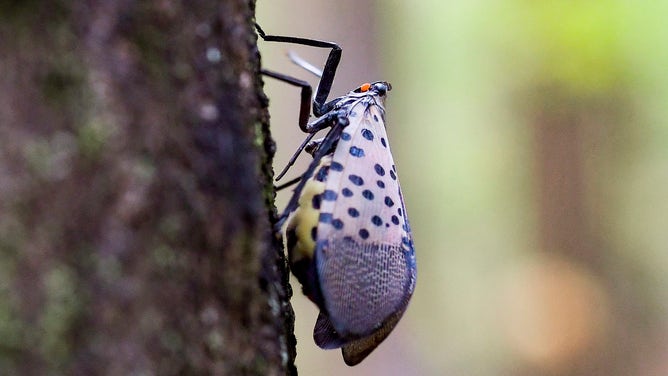
An adult spotted lanternfly on the side of a tree in Shillington Park Wednesday morning October 27, 2021.
(Ben Hasty / MediaNews Group / Reading Eagle / Getty Images)
"This supported the current observational data and some of the long-distance jumps we know the spotted lanternfly has made," he added.
Ladin noted that the primary mode of spread is yet to be determined. Some examples he mentioned included egg masses laid on vehicles or pregnant females hitchhiking on vehicles.
Researchers now urge travelers to check their vehicles for lanternflies and lanternfly eggs and remove them accordingly.
The life cycle of lanternflies throughout the seasons
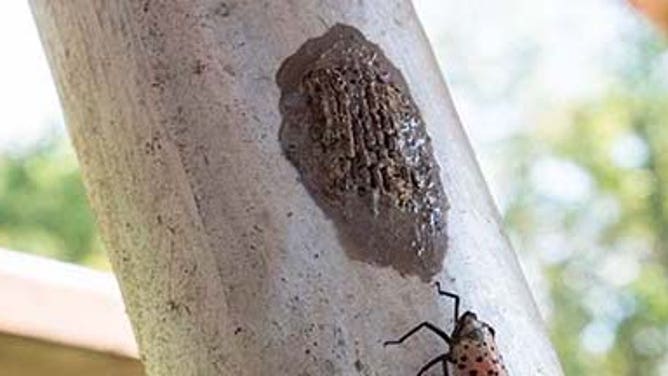
A spotted lanternfly egg mass and an adult.
(USDA / FOX Weather)
As winter ends and the warm weather of spring and summer return throughout the country, spotted lanternflies will begin to emerge.
Eggs that were laid in the fall will hatch in the spring, according to the Virginia Department of Forestry. Then, the crawling juveniles will progress through four life stages to become winged adults.
According to the study, the chances of human-aided spread are most likely from June through September, since both juveniles and adults are present. It's also when mating and egg laying occur.
